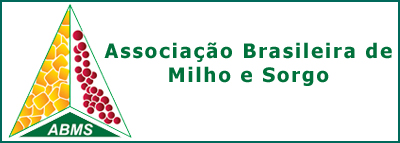WEED MANAGEMENT ON THE CORN CROP FERTILIZED WITH POULTRY LITTER
DOI:
https://doi.org/10.18512/1980-6477/rbms.v15n1p114-123Keywords:
systems fertilization, anticipation of fertilization, organic fertilization, weed control, Zea maysAbstract
ABSTRACT - In this work, the application of poultry litter for corn crop, its influence on the weed community and the interrelation with mechanical and chemical control methods were investigated. Before management, weed phytosociological analysis were done, adopting six treatments and six replications. A randomized blocks design in a factorial 2x5+2 was adopted to evaluate the control methods. The first factor was the form of control, application of herbicide nicosulfuron in post emergence and mechanical control (hand weeding). The second factor was the doses of poultry litter that corresponded to 0, 50, 100, 200 and 300% of corn N recommendation. The checks consisted of the two methods of weed control associated with recommended N using mineral fertilizer. The corn plant height was evaluated at 14 and 28 days after management. The results showed that the incorporation of poultry litter promoted changes in the relative importance of weed species, until the time of control. The weed control method did not affect corn yield; however, the plant height 47 days after sowing with mechanical control was higher. With the poultry litter dose corresponding to 200% of the recommended nitrogen, corn grain yield was similar to that obtained with mineral fertilizers. Key words: Systems fertilization, anticipation of fertilization, organic fertilization, Zea mays.
Key words: Systems fertilization, anticipation of fertilization, organic fertilization, Zea mays.
MANEJO DE PLANTAS DANINHAS NA CULTURA DO MILHO SUBMETIDO À ADUBAÇÃO COM CAMA DE FRANGO
RESUMO - Na pesquisa, investigaram-se a incorporação de cama de frango na cultura do milho, sua influência na comunidade de plantas daninhas e inter-relação com os controles mecânico e químico. Antes do controle, realizou-se a análise fitossociológica de plantas daninhas, adotando-se seis tratamentos e seis repetições. Para avaliação dos métodos de controle, foi adotado o delineamento de blocos ao acaso, em um esquema fatorial 2x5+2. O primeiro fator foi a forma de manejo, herbicida nicosulfuron em pós-emergência e controle mecânico (capina manual). O segundo fator foram doses de cama de frango correspondendo a 0, 50, 100, 200 e 300% do N recomendado para o milho. As testemunhas consistiram dos dois métodos de manejo com aplicação do N mineral. A altura das plantas de milho foi avaliada aos 14 e aos 28 dias após o manejo. A cama de frango promove mudanças na importância relativa de espécies de plantas daninhas até o momento do controle. Os controles mecânico e químico não afetam a produtividade, embora com maior altura de plantas aos 47 dias após a semeadura com controle mecânico. Com dose de cama de frango correspondente a 200% do nitrogênio recomendado, a produtividade de milho é similar à obtida com fertilizante mineral.
Palavras-chave: Adubação de sistemas, antecipação de adubação, adubação orgânica, Zea mays.
Downloads
Published
How to Cite
Issue
Section
License
Authors retain copyright and grant the journal right of first publication with the work simultaneously licensed under the Creative Commons Attribution License that allows the sharing of work and recognition of the work of authorship and initial publication in this journal.
Authors are able to take on additional contracts separately for non-exclusive distribution of the version of the paper published in this journal (eg, in an institutional repository or publish as a book), with acknowledgment of its initial publication in this journal.
Authors are permitted and encouraged to post their work online (eg, in institutional repositories or on their website) at any point before or during the editorial process, as this may leadto productive exchanges, as well as increase the impact and citation of published work.



